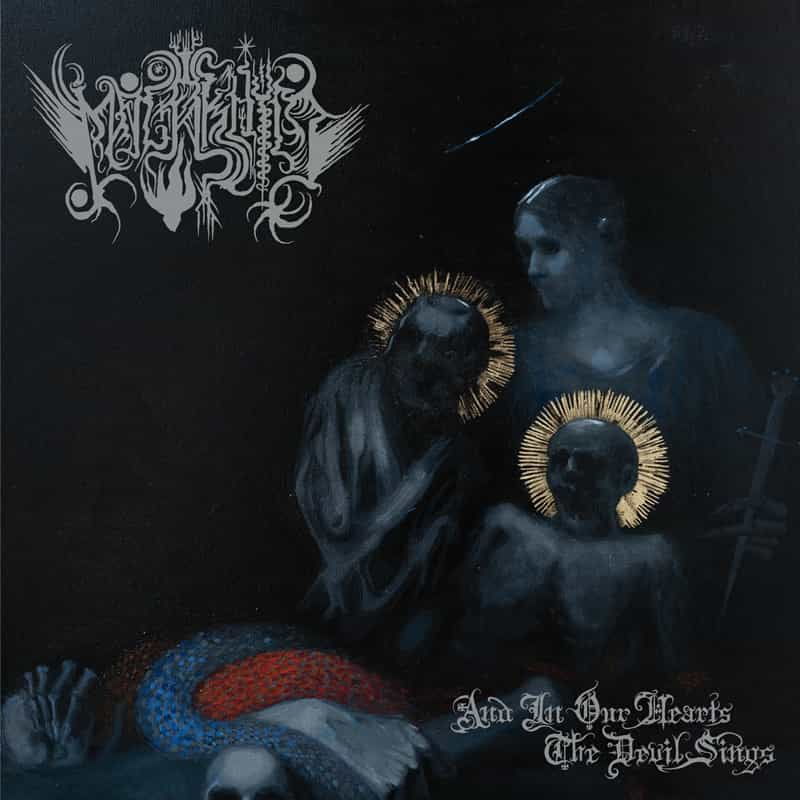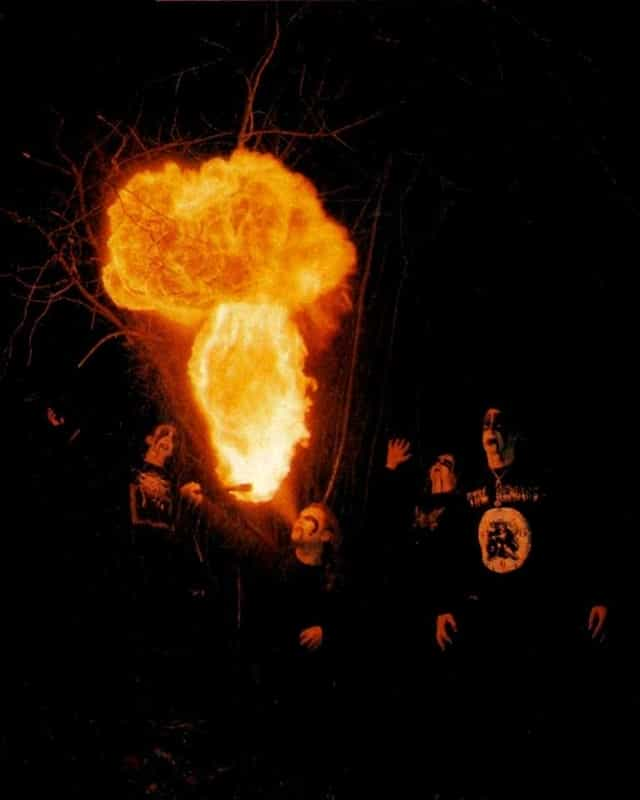Album Review: Occult Odyssey and The Black Monolith – Rituals For The Ancient Monolith

Artist: Occult Odyssey and The Black Monolith
Title: Rituals For The Ancient Monolith
Label: Noctivagant
Release date: March 20th, 2025
Country: Mexico/Greece
Format reviewed: High-quality digital recording
Album Review: Occult Odyssey and The Black Monolith – Rituals For The Ancient Monolith via Noctivagant by Pegah
“Rituals for the Ancient Monolith” is a split album created by Occult Odyssey and The Black Monolith, released on March 20, 2025, via the U.S. label Noctivagant. Steeped in dark ambient and ritual soundscapes, the album draws heavily from esoteric currents and delves into the mythological realms of ancient Mesopotamia, centering around the demon Pazuzu. The release is structured in two parts, with the first six tracks contributed by Occult Odyssey and the remaining pieces by The Black Monolith.
The album opens with “ Astral Invocation in the Desert Temple”, in a vast, desolate desert a liminal space where spiritual awakening and enlightenment seem possible. The soundscape gradually takes shape, beginning with the distant cries of ravens symbols of loss, bad omen, and yet also of insight and prophecy. Their calls seem to herald the arrival of something unknowable. As the faint thump of a bass drum rises, it feels as though a forgotten temple is slowly emerging. “Opening of the Ritual to Choronzon” follows with a chilling atmosphere, dedicated to the demon Choronzon a guardian of the abyss known for harboring immense knowledge. The track’s dissonant echoes and unsettling textures invoke coldness and dread, as if summoning Choronzon from the shadows.
The ritual truly begins with “Ceremony and Call of God Pazuzu”. Amid whispered invocations and arcane murmurings, the presence of Pazuzu is summoned. The soundscape, stripped of unnecessary complexity, conveys a raw, sacred intensity, evoking the feeling of a rite taking place deep within a cave or in a temple, much like the setting depicted on the album’s cover. The repeated invocation of Pazuzu’s name, accompanied by glossolalia that twists and distorts, suggests a moment of divine rupture, as if the god has manifested. The atmosphere turns harsh, punctuated by screams that seem to mark the god’s arrival and perhaps his approval, immersing the listener in a moment of terrifying revelation.
Two main layers of sounds can be hear in “ Vortices of Inserrection of the Lilus of the Abyss”, one is the harsh sound, somehow like a vortex that absorbs everything to itself and there is no way out, and the other is the spoken words being uttered by someone who is performing the ceremony. “The Seeds of Hanbi and Humbaba” continues the ritual by drawing deeper into the well of Mesopotamian mythology. The track references Hanbi the elusive lord of evil and father of Pazuzu and Humbaba, the monstrous guardian of the Cedar Forest. It opens with the tolling of a bell, a traditional ritual gesture meant to ward off evil spirits and, in this context, Hanbi himself. Soon after, the listener is met with a sound reminiscent of clattering bones another element steeped in ritual practice, evoking ancestral rites and sacrificial offerings. “The Eternal Cult of the Lion’s Head and the Serpent’s Tail” plunges into a more abstract, cosmic atmosphere. The soundscape evokes a vast and unending void cold, consuming, and eternal. It brings to mind the Ouroboros, the ancient symbol of the serpent devouring its own tail, representing the endless return and self-regeneration. Coupled with the imagery of the lion king of beasts and a symbol of divine authority the track embodies the tension between power and transformation. Together, these symbols suggest a cult devoted not only to strength but to eternal renewal through destruction and recreation.
The Black Monolith’s half of the album begins with “Veins of Starlight”,introducing a more dynamic, pulse-like rhythm that subtly shifts the atmosphere. There’s a sense of movement here as if energy is beginning to stir within the cosmic void. “From the Tombs of Forgotten Suns” then draws the listener back into desolation. With a soundscape that feels windswept and hollow, it evokes a return to the temple in the desert. The phrase “Forgotten Suns” hints at the absence of light, perhaps a nod to Shamash, the Mesopotamian sun god. His “forgetting” or departure suggests a world forsaken by divine illumination, without the judgment of the sun. “The Stygian Key” transports the listener to a cold, subterranean world. The track’s name alludes to the “River Styx” of Greek mythology an underworld passage separating the world of the living from the dead. Its soundscape feels dense and airless, shaped by deep reverberations and echoing whispers murmuring from the depths.
As the album nears its end, “Bones Cast into Cosmic Silence” signals the waning of the ritual. The bones so prominent in earlier ceremonial sound motifs are now scattered into the vastness of space, their resonance fading. This transition into silence suggests a final offering. The sudden absence of voices is striking, implying not just physical silence, but spiritual completion. The final piece, “Invocation of the Starless Void”, stands in deliberate contrast to the opening “Astral Invocation in the Desert Temple”. Where the beginning was full of celestial anticipation and summoning, this conclusion, as its soundscape suggests, descends into a space devoid of light or presence. The “starless void” is not just an absence of stars, but an absence of guidance, of gods, of return. It is the final dissolution, the point beyond the veil where all form collapses. The ritual does not resolve it vanishes into eternal obscurity. 8/10
Occult Odyssey
Bandcamp
Instagram
The Black Monolith
Bandcamp
Instagram
Facebook
8/10 To Greatness and Glory!
**Please support the underground! It’s vital to the future of our genre**
#WeAreBlessedAltarZine
#TheZineSupportingTheUnderground


